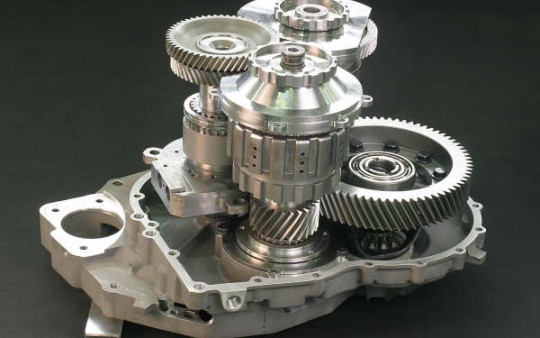Antonov TX6 Automatic
By Chris Guile
Antonov, the developer of a novel type of automatic transmission, is edging ever closer to series production of its transmissions. Antonov nearly achieved this back in early 2005, when one of its designs was close to being approved by MG-Rover, but the subsequent collapse of MG-Rover put an end to that plan.
More recently, Antonov has been targeting the Chinese market, where many of the vehicle OEMs are desperate for affordable ''non-manual'' transmissions.
In particular, Antonov has developed the 6-speed TX6 program, the current version of which has evolved from the unit developed for MG-Rover. What is most striking about the design is that it does not use a torque converter - a launch device which is used with almost every other planetary-based automatic.
In the Antonov TX6, the torque converter has been replaced with a pair of wet clutches (one for forward gears and one for reverse), which are open when the vehicle is stationary, but closed when power needs to be transmitted to the wheels. And the significance of this is that a clutch is more efficient in terms of fuel consumption, than a torque converter, which in turns leads to reduced CO2 emissions.
It is true that many manufacturers are now using what is called converter ''lock-up'', where the two halves of the torque converter are locked together, under an increasing number of conditions (even sometimes in 1st gear). This does improve the efficiency, but it also means that the converter is effectively redundant for most of the time.
In most AMTs and some CVTs, clutches are already being used, so what is there to prevent the automatics using the same technology? In reality, there is already one example of an automatic transmission with a clutch, in production, but this is found at the very top of the market - in the Mercedes-Benz SL63 AMG. In this particular case, it is being used to compete with DCT technology, which Daimler is currently developing, but which is not yet production ready.
Regardless of what happens to the Antonov transmission, other manufactures may follow this route, and look at replacing torque converters with clutches, to gain a small advantage when it comes to CO2 performance.
The TX6 transmission also avoids the high capital investment, cost, complexity and development issues associated with dual clutch automated manual transmissions. It therefore provides a solution for manufacturers with millions invested in existing manufacturing plants already building planetary design automatic transmissions to modify their designs by eliminating the torque converter. Following four years of design, development and prototype build, the programme has now entered the pre-production phase.
Antonov is still working on the efficiency of the TX6, and is aiming for a point somewhere between a classic 6-speed automatic and a 6-speed manual. However, the engineers may be aiming too low, given that the ZF 2nd generation 6HP (6-speed automatic) is already more efficient than a manual, in some applications, over the European Drive Cycle. For example, the official CO2 values for the new BMW Z4 show that the automatic version of the Z4 23i has 3.5% lower CO2 emissions than the manual version.
Other claimed benefits of the TX6 over conventional automatics include:
- A wider ratio spread (up to 6.0);
- More flexibility of the ratios themselves (fewer interdependencies);
- 3 direct drive gears (4th, 5th and 6th), for better efficiency;
- Low vehicle integration costs
The current model has a target weight of 80kg and is rated up to 270N.m, although consideration is being given to a smaller version, rated at up to 150N.m. Higher torque versions are possible, although these would require larger diameter launch clutches.
sources
http://www.newspress.co.uk/DAILY_LINKS/arc_feb_2009/56986ant.htm
http://www.just-auto.com/article.aspx?id=98942


